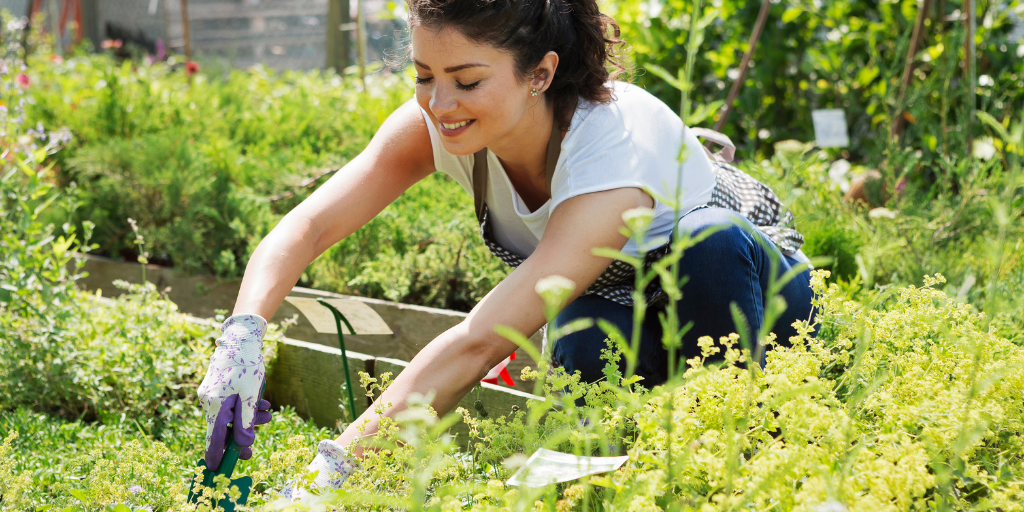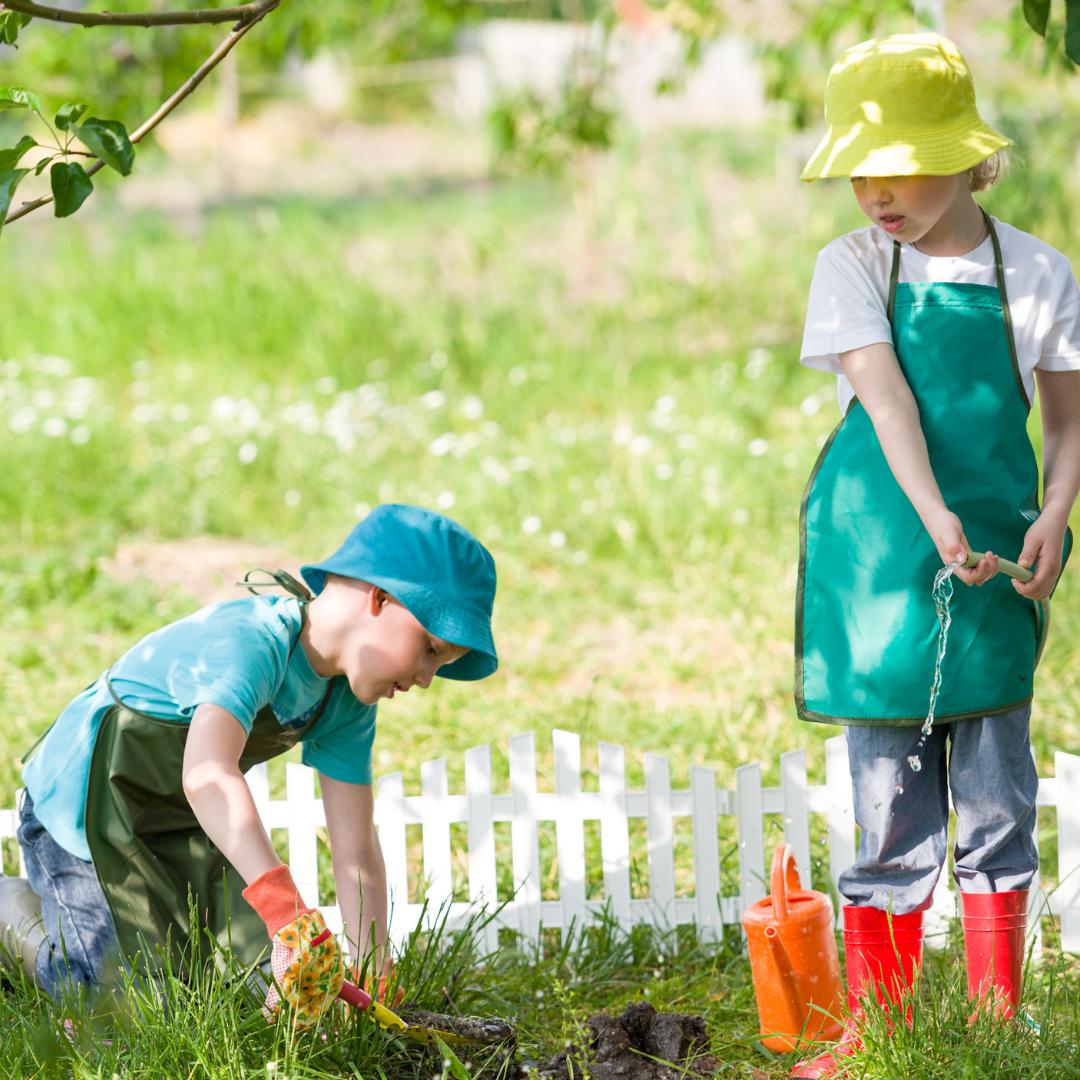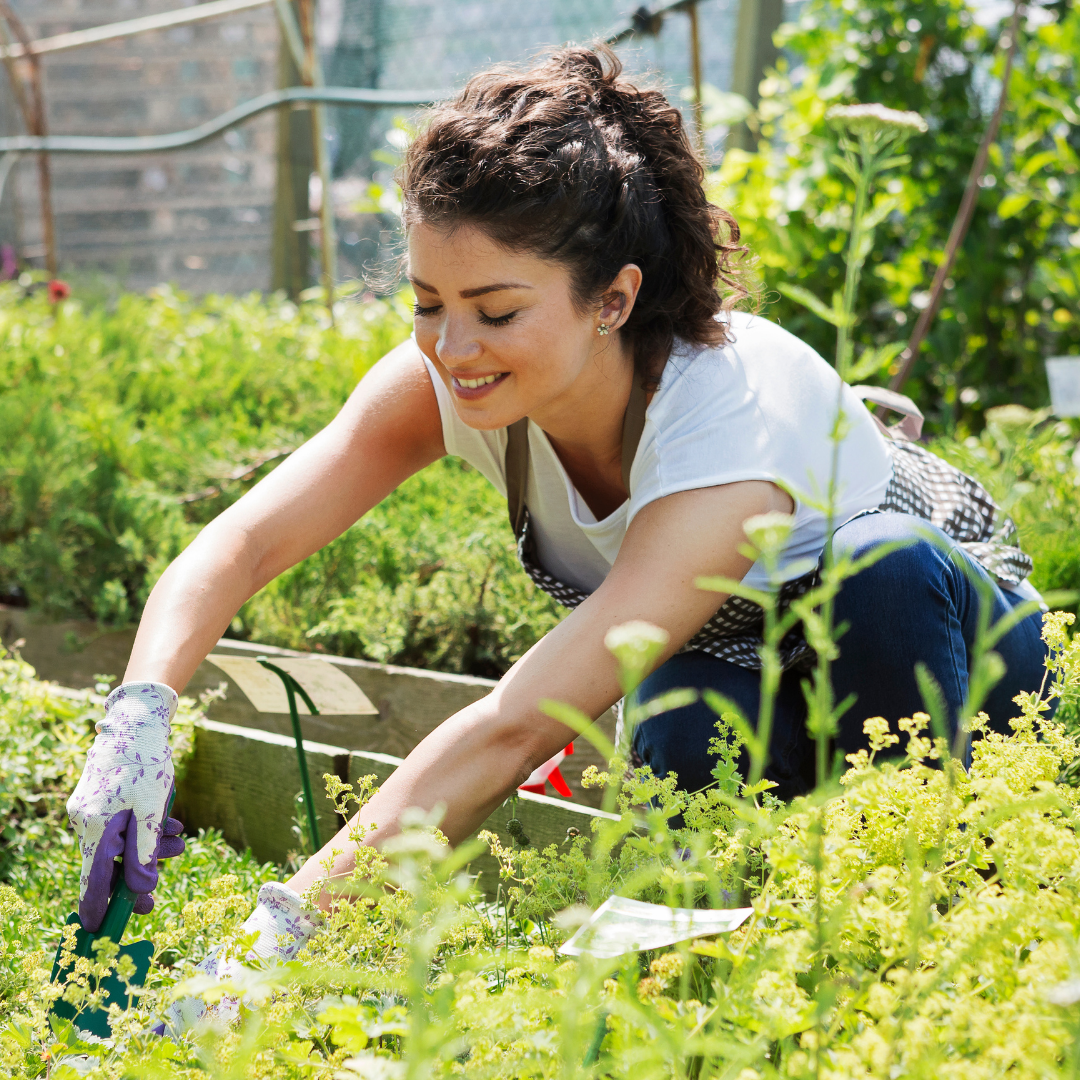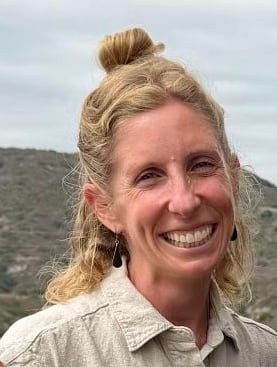
Caitlan Rangel finds healing in the work, wonder, and prayer that her garden invites.
I grew up eating tomatoes off the vine, warm juice flowing down my hands and arms. From a young age, I had my hands in the dirt, participating in our family’s weekly “Pride of Ownership Hour” in the yard—my siblings and I called this time “POOH.” I giggle at “POOH” even more now that I have children who relish in any opportunity for innocent potty humor.
As I traversed my teenage and young adult years, I disconnected from food’s origins. Food became bad or good and would make me fat or skinny. A meal could come as a packaged protein bar, or other “approved” foods, and only in specific portions. I recall once walking into a dining hall with my exact meal planned. When the dining hall didn’t have a certain element of the meal, I was so overcome by anxiety I had to leave.
When I became a mother for the first time, I knew my relationship with food needed to change. I needed to nourish the life within my womb. I needed to keep another human being alive and try to help him thrive. Through motherhood, I came back to the garden.

Though the process has taken years, creating and maintaining a garden has been one of God’s greatest agents of healing in my life. Of course God brings healing through the actual food we grow—His creation is so beautiful and designed to nourish our bodies. But God doesn’t stop at healing one part of us: He wants our wholeness. God has used our garden to heal many of my wounds. God has healed and continues to heal by sanctifying our garden as a place of holy work and holy waste.
It is true, good, and beautiful to work soil through your hands. I’ve learned what soil should look and smell like. I’ve prepared soil, rejoiced in the worms that do such good for it, and put down seeds. My children help me water, watch for pests, and sprinkle coffee grounds. Together, our family watches life emerge and we care for it. We’ve also watched crops die, which imparts a lesson of its own. When the time comes, we harvest. Sometimes the food makes it to the kitchen. Other times, the broccoli or carrots I had hoped to use for dinner are consumed in the garden by my children before they come near the plate.
While the garden is a place of holy work, it is also a place of holy waste. When I was in college, my spiritual director told me to make a “holy waste of time” each week. “Sit on a bench and do nothing,” she said. Watch the trees, listen to the birds, close your eyes. Just be.
We all know this assignment can be exceedingly difficult. But, if you begin a garden, I think you will be one step closer to making a holy waste of time. The garden holds more than meets the untrained eye. It reintroduces awe with discoveries of caterpillars that will become butterflies, ladybugs helpfully eating aphids, seedlings poking their heads through the surface, gorgeous broccoli and beetroot opening their leaves to the sky. The garden, especially with the help of children, is a place of wonder. It invites us not only to work, but to rest, marvel, and enjoy.
I sometimes wonder about the gardens where Jesus wandered and prayed. I find myself thinking of this more often during this season of Lent, as I pray the sorrowful mysteries of the Rosary a bit more often. I look out at my own garden, and picture Jesus there, deep in prayer.
Jesus, help us come close to the earth as You did. Knees on the dirt, hands working in stewardship of Your Father’s gifts, hearts grateful for the moments of holy work and waste You provide.

Copyright 2022 Caitlan Rangel
Images: Canva Pro
About the Author

Caitlan Rangel
Caitlan Rangel likes making bread and books. She is a wife and homeschooling mom, and the author of the children’s picture book, The Restless Grain: A Tale of Hope. Caitlan holds a B.A. in Theology and Master of Divinity from the University of Notre Dame. She lives in Southern California on the canyon where she grew up. Connect with Caitlan on Instagram @restandrise.caitlanrangel, her website at CaitlanRangel.com, and Substack.


.png?width=1806&height=731&name=CatholicMom_hcfm_logo1_pos_871c_2728c%20(002).png)
Comments